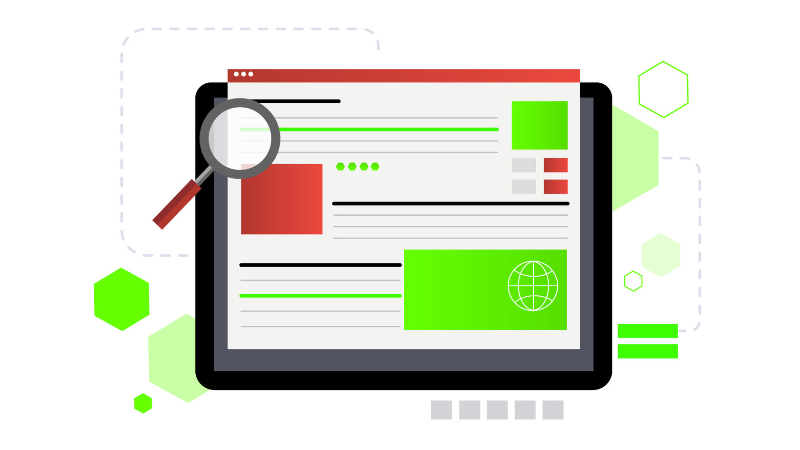Search results

Components of a search engine results page (SERP)
The search results may refer to any kind of data. Generally, a list of results includes the following components:
- Natural or organic results provided by SEO which uses keywords, links, and other pieces of relevant content;
- Sponsored results mainly represented by ads which are paid for a click that user will make;
- Local listings including short text where user can notice a part of the query;
- Knowledge graph with facts and proven information about the customer’s request; such graphs are often provided by Wikipedia or Google itself;
- News articles which contain the latest news from leading publications that mostly relate to the query;
- Images which are shown up as a separated tab in the search engine, here user can find images and photos which are directly related to the request;
- Videos are represented in another tab for video content provided by the search system;
- Products to purchase are placed in a special block with photos and recommended prices;
- Suggestions for additional search usually can be found in a separate block below; there is a list of alternative user requests which somehow match the main query.
It is not a complete list of elements and blocks which form the page of search results.
Yet nothing is more important for website owners than search results.
The main purpose of each marketer is to get on the top of that list.
The higher the link of the page is in the search list the more traffic it receives. For reaching this goal many developers use SEO.
Professional SEO pushes the website upper in the list and help to attract the target audience.
Some website owners misuse SEO by adding popular keywords to the texts that in fact are not connected to their product.
How it works with Google
Google is the biggest search system in the world.
More than 90% of people use it worldwide.
The engine is being permanently developed and improved however all the changes are based on prime standards and algorithms of work.
Google uses pretty specific methods to analyze the requests. At the same time the system may run radically different operations. It can:
- interpret spelling errors;
- determine the type of query basing on the latest user research;
- use embedded maps, translators, emails, disks, etc;
- implement the algorithms to determine whether websites work well enough.
The search engine checks up a lot of things.
For instance, it examines how websites show up in diverse browsers, whether they are optimized for all kinds of devices including computers, tablets, and smartphones, and whether pages load quickly enough even with a low speed of Internet connection.
What is more, the web search engine uses selected categories related to the key query such as images, maps, newsfeeds, purchases, videos, science articles, books, movies, celebrities, dates, etc.
Thus the system narrows the search area and makes it faster and more accurate.
How to reach top positions in Google ranking
In order to generate relevant search results, Google uses automated programs called spiders or crawlers.
The web search engine has a large index generator for keywords that finally define search results.
What sets Google apart from the rest of popular engines is how it ranks results — special frameworks determine the order in which results appear on the search engine result pages.
Also, the web search engine has a trademarked algorithm PageRank which assigns each site a relevance score.
PageRank considers a huge number of factors.
The priorities of what is more important for scoring changes all the time but here are some basic factors which have an impact on the position in search results:
- A number of other pages which are linked up with the required site;
- Frequency and location of keywords on a web page;
- Lifetime of a website;
- Users’ behavior on the website.
So if you want to reach top positions in the search results of Google your web page should have relevant and interesting content for the target audience.
Furthermore, pay attention to the lifetime of your website.
Also a good reputation and popularity help to reach the top lines. Work on them hard!
Finally, create actual links inside and outside of your website to connect your pages to the rest of the internet. As a result, Google will identify your website as a trusted and reliable source.
Also, publishing additional materials on the site such as pictures, maps, and others help to reach top positions.
And last but not least, do not forget about the HTML-markup of the text — it should be well-structured and have suitable headers and lists.